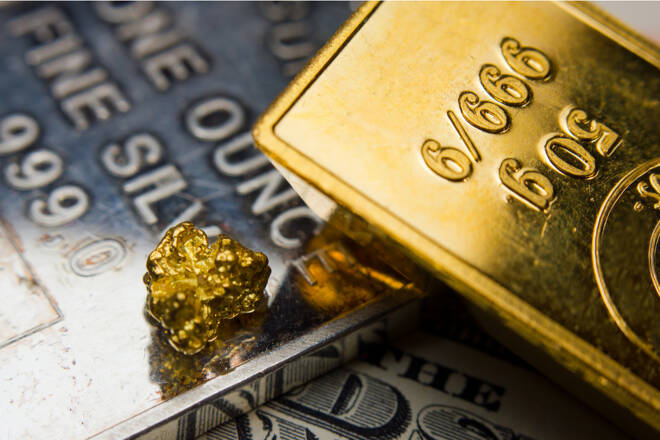Advertisement
Advertisement
Gold Prices Underpinned by Slower Rate Hike Expectations but Capped by Lingering High Inflation
By:
Gold prices predicted to rise over the long-run as investors bet on slower rate hikes or even a pause by the Fed.
Highlights
- Gold prices expected to rise due to slower rate hikes
- U.S. consumer spending up 0.2% in February
- Inflation remains high, potential for another interest rate hike in 2023
Overview
Comex gold futures prices are edging lower on Friday due to conflicting signals from Treasury yields and the U.S. Dollar. While Treasury yields were moving lower, the U.S. Dollar was increasing against major currencies.
However, despite this decline, gold prices were still expected to rise for a second consecutive quarter as investors were increasingly betting that the U.S. Federal Reserve would reduce the pace of interest rate hikes.
At 14:50 GMT, June Comex Gold futures are trading $1986.10, down $11.60 or -0.58%. Prices moved as much as 0.4% higher following data that showed U.S. consumer spending rose modestly in February.
The XAU/USD is at $1968.76, down $9.80 or -0.50%.The SPDR Gold Shares ETF (GLD) is trading $183.00, down $1.18 or -0.64%.
PCE Remains High, Possibility of Interest Rate Hike in 2023
Consumer spending in the United States increased by 0.2% in February, following a sharp increase of 2.0% in January.
Despite inflation cooling, the Personal Consumption Expenditures (PCE) price index remained high, raising the possibility of another interest rate hike by the Federal Reserve in 2023.
Income Growth Slows and Consumer Spending Shifts in February Update
The increase in consumer spending on housing, utilities, and healthcare was offset by reduced spending at restaurants, bars, and hotels.
Spending on long-lasting manufactured goods declined due to the plunge in motor vehicle purchases, while nondurable goods increased by 0.9% due to higher gasoline prices.
Overall, service spending rose by 0.2%. Adjusted for inflation, consumer spending dipped by 0.1%, although JPMorgan raised its first-quarter GDP growth estimate to 3.25% from 2.5%, while Goldman Sachs bumped up its estimate by 0.2% to a 2.4% pace.
Personal income growth slowed to 0.3% in February, with wage gains also cooling to 0.3% from 0.9% in January.
Although there was a limited impact on consumer sentiment from the recent banking sector turmoil, sentiment declined for the first time in four months.
Lower-income, less-educated, and younger consumers, as well as consumers with the top tercile of stock holdings, were the most affected. The Personal Saving Rate increased to 4.6% from… Consumer Confidence continues to be a point of concern as inflation fears subside.
For a look at all of today’s economic events, check out our economic calendar.
About the Author
James Hyerczykauthor
James Hyerczyk is a U.S. based seasoned technical analyst and educator with over 40 years of experience in market analysis and trading, specializing in chart patterns and price movement. He is the author of two books on technical analysis and has a background in both futures and stock markets.
Advertisement
